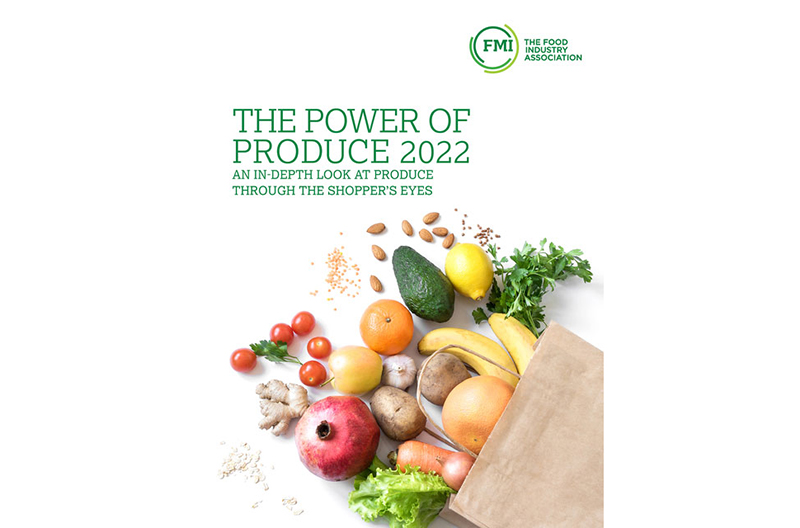FMI – the Food Industry Association has released its “2022 Power of Produce” report, revealing 25 percent of shoppers ranked price as the No. 1 factor when making fresh produce purchasing decisions, followed by appearance at 19 percent, health benefits at 19 percent and ripeness at 15 percent.
The report also offers insights on consumers’ produce shopping habits related to health and well-being and heightened preference for locally grown and convenience options.
“In the past, the clear No. 1 factor when buying fresh produce was appearance and quality,” said Rick Stein, VP of fresh foods for FMI.
“However, this year’s survey showed that item price is now the No. 1 factor produce consumers consider – on par with appearance and quality. In addition to price, consumers are focusing on items with prolonged shelf-life, buying less or finding substitutes. At the same time, we see more shoppers concentrate on health and well-being when making fresh produce purchasing decisions and a strong desire for convenience.”
Shoppers link produce to health benefits
Ninety-six percent of shoppers believe that picking from the produce aisle is considered an investment in personal health and well-being. Consumers increasingly associate fresh produce with digestive health, weight management and disease management.
In fact, one-third of consumers who pay a lot of attention to health and nutrition tend to see fresh produce as playing a central role in their diet, and six-in-10 shoppers purchase fruits and vegetables to deliver on specific health benefits. This positive association has spurred higher demand for more information about nutrition, health benefits, recommended daily amounts and other health-centric insights.
Consumers crave convenience
From pre-cut and pre-washed options to grab-and-go and ready-to-serve solutions, convenience remains the top value-add for produce shoppers. The report found that 45 percent of shoppers frequently purchase convenient vegetable solutions and 48 percent purchase convenient fruit solutions.
This popularity among consumers led to value-added fruits and vegetables making up 14.4 percent of total fresh product sales in 2021. The share of shoppers expecting to purchase more value-added produce remains high at 27 percent, while only 5 percent anticipate they will purchase less.
Locally grown outperforms all other attributes
Fifty-six percent of consumers say they want their produce department to carry more fruits and vegetables that are locally grown, followed by grown in the U.S. at 54 percent. Such distinctions are most effective when paired with specific locally sourced definitions, like a certain mile radius or state lines.
However, the definition of the term differs depending on the area of the country in which the shopper lives and the generation to which they belong.
The “2022 Power of Produce” was conducted by 210 Analytics and made possible by the Southeast Produce Council, Invafresh and Yerecic Label. The report was presented at SEPC’s 2022 Southern Exposure conference.
To purchase and view the full report, click here.
To read more about the Southern Exposure conference from The Shelby Report, click here.

